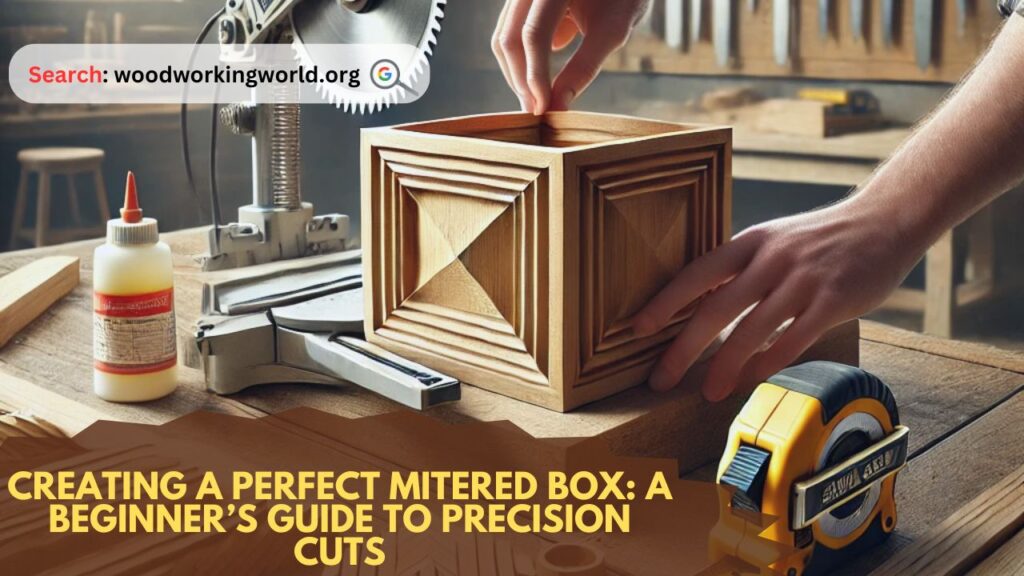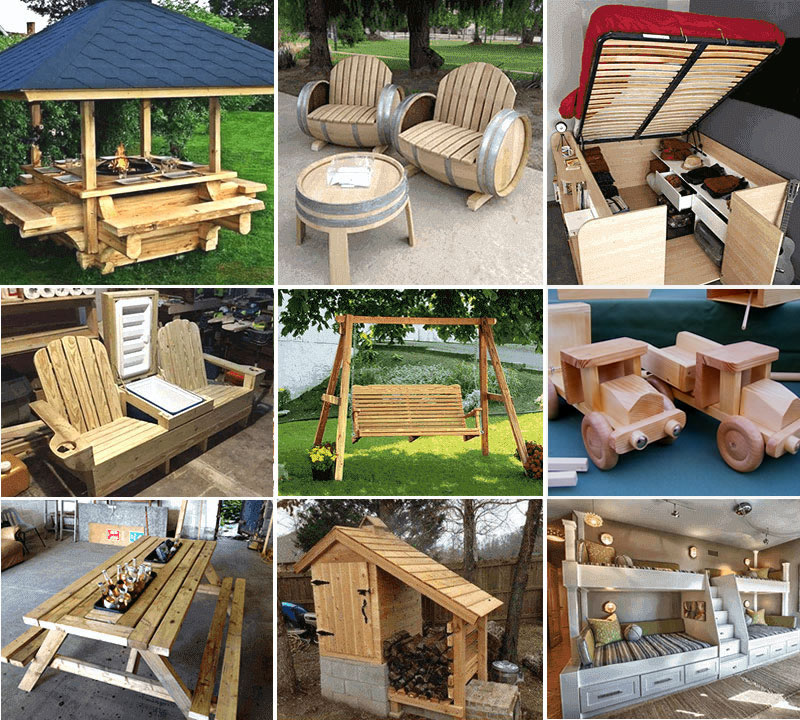Creating a Perfect Mitered Box: A Beginner’s Guide to Precision Cuts
A mitered box is a versatile and elegant woodworking project. Its seamless corners make it an ideal choice for creating decorative boxes, storage solutions, or furniture components. Achieving clean, accurate miter cuts can seem daunting for beginners, but with the right tools and techniques, anyone can build a perfect mitered box.
This guide will walk you through the process step-by-step and provide tips for mastering precision cuts.

👉 Click here to unlock 16,000+ DIY woodworking plans now
Why Choose a Mitered Box?
A mitered box offers several advantages:
- Seamless Corners: The angled cuts create a professional and polished appearance.
- Strength and Stability: Properly joined miters provide strong structural integrity.
- Versatile Applications: Suitable for various projects, from small jewelry boxes to large furniture components.
Essential Tools and Materials
| Tool/Material | Purpose |
|---|---|
| Miter saw | Cutting accurate angles |
| Clamps | Holding pieces securely during assembly |
| Measuring tape | Ensuring precise dimensions |
| Wood glue | Bonding pieces together |
| Sandpaper (120 to 220 grit) | Smoothing surfaces and edges |
| Square | Checking for accurate angles |
| Safety gear (goggles, gloves) | Protecting yourself during the project |
Pro Tip: Invest in a sharp, high-quality miter saw blade for cleaner cuts.
Step 1: Measure and Mark Wood
- Determine Dimensions: Decide the length, width, and height of your box.
- Mark the Wood: Use a pencil and square to mark precise cutting lines.
- Double-Check Measurements: Accuracy is crucial for tight-fitting corners.
Tip: Measure twice and cut once to avoid mistakes.
Step 2: Make Accurate Miter Cuts
Using a Miter Saw:
- Set the Angle: Adjust the saw to 45 degrees.
- Align the Wood: Place the wood firmly against the fence.
- Make the Cut: Use a slow, steady motion to cut through the wood.
Tips for Precision:
- Ensure the wood is flat and stable.
- Use a stop block for consistent lengths.
- Check the angle with a square after each cut.
Safety Note: Always wear safety goggles and keep your hands clear of the blade.
Step 3: Test Fit the Pieces
- Arrange the Cut Pieces: Place the four sides of the box together.
- Check for Gaps: Look for any gaps at the corners.
- Make Adjustments: Sand or re-cut as needed to achieve a tight fit.
Pro Tip: A perfect fit should hold together without glue.
Start Your Next Project With Teds’ Archive Of 16,000 Plans!
Instant access to all 16,000 woodworking plans with step-by-step details, photos, materials lists and more
Monthly free plans with lifetime membership access – No renewals, recurring fees or other charges


Step 4: Assemble the Box
1. Apply Wood Glue:
- Spread a thin, even layer of wood glue on the edges of the pieces.
2. Clamp the Pieces:
- Use corner clamps to hold the sides in place.
- Check that the corners are square.
3. Remove Excess Glue:
- Wipe away any excess glue with a damp cloth.
4. Let the Glue Dry:
- Allow the glue to dry according to the manufacturer’s instructions.
Step 5: Sand and Finish
- Sand the Surface:
- Start with 120-grit sandpaper and progress to 220-grit for a smooth finish.
- Check the Corners:
- Ensure the corners are smooth and seamless.
- Apply Finish:
- Use paint, stain, or a clear coat to protect and enhance the wood.
Tip: Apply multiple coats for a rich, durable finish.
Common Mistakes and How to Avoid Them
| Mistake | Solution |
|---|---|
| Incorrect angles | Double-check saw settings and use a square to verify cuts |
| Gaps in corners | Sand or re-cut pieces for a better fit |
| Glue mess | Wipe away excess glue immediately |
| Uneven finish | Sand thoroughly and apply finish evenly |
Expert Tips for Success
- Use Test Cuts: Practice on scrap wood before cutting the actual pieces.
- Clamp Properly: Ensure clamps are tight but not overly aggressive.
- Maintain Sharp Blades: Dull blades can cause splintering and uneven cuts.
- Be Patient: Take your time to ensure accuracy and precision.
Quote: “Precision is the key to perfection in woodworking. Measure carefully, cut precisely, and assemble thoughtfully.”
FAQs
1. What type of wood is best for mitered boxes?
Hardwoods like oak, maple, and cherry provide durability and a beautiful finish. Softwoods can be used for lightweight projects.
2. How do I ensure my miter cuts are accurate?
Use a high-quality miter saw and double-check the angle settings. A digital angle gauge can also help.
3. Can I use nails instead of glue for assembly?
Wood glue provides a cleaner and stronger bond. Nails can be used for added reinforcement if desired.
4. How long does the glue need to dry?
Most wood glues require at least 24 hours to fully cure.
5. What finish should I use for my mitered box?
The choice of finish depends on your preference. Clear coats, stains, and paints are all suitable options.
Conclusion
Creating a perfect mitered box is a rewarding woodworking project that requires precision and patience. By following this step-by-step guide and incorporating expert tips, you can achieve professional-quality results. Happy crafting!
👉 Click here to unlock 16,000+ DIY woodworking plans now
